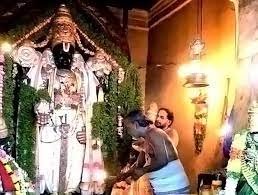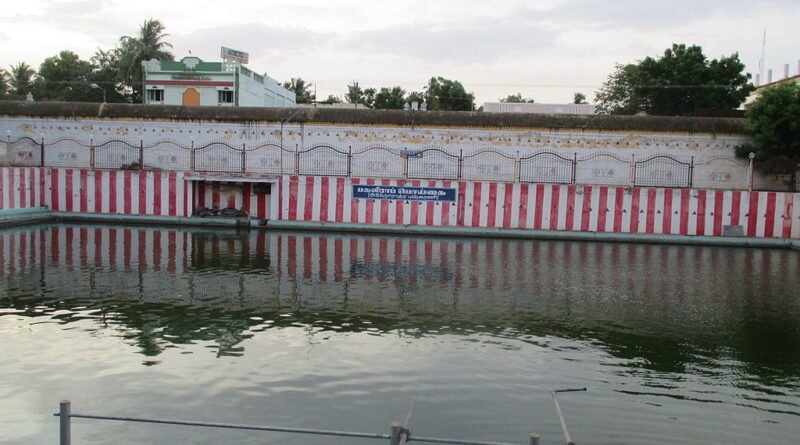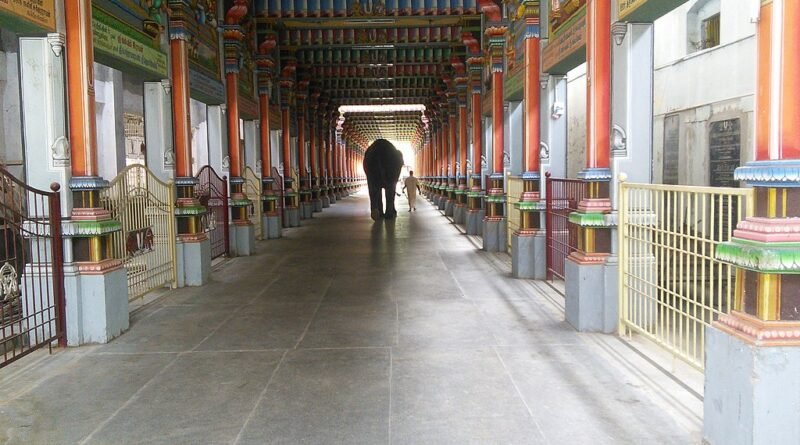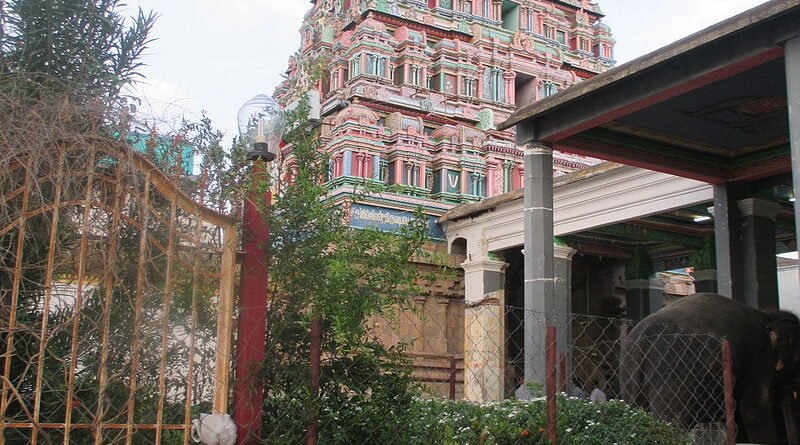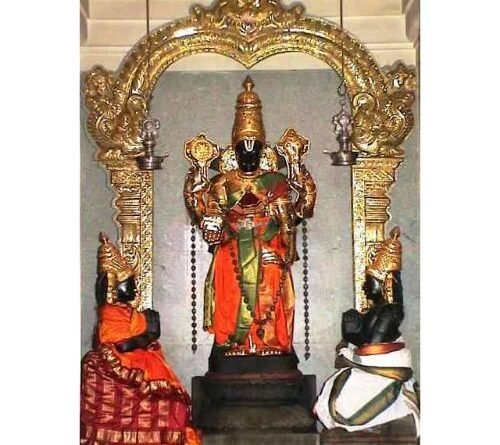Oppiliappan Temple/Uppiliappan Temple Thirunageswaram,Kumbakonam,Tamil Nadu
Oppiliappan Temple, is a Hindu temple dedicated to Vishnu, located near Thirunageswaram and also known by its old toponym Thiruvinnagar, a village in the outskirts of the Kumbakonam in the South Indian state of Tamil Nadu. Constructed in the Dravidian style of architecture, the temple is glorified in the Naalayira Divya Prabandham, the early medieval Tamil canon of the Alvar saints from the 6th–9th centuries CE. It is counted as the 60th of the 108 Divya Desams dedicated to Vishnu. Vishnu is worshiped as Oppiliappan and his consort Lakshmi as Bhudevi.
The temple is one of the Pancha Kshethram where Maha Lakshmi was born as Bhargavi– the daughter of Maharishi Bhrigu. The other four temples of the Pancha Kshethram are Sarangapani temple, Kumbakonam, Sundararaja Perumal Temple, Salem, Nachiyar Koil and Venkateswara Temple, Tirumala.
The temple is believed to be of significant antiquity and to have been initiated by the Medieval Cholas of the late 8th century CE, with later contributions at different times from Thanjavur Nayaks. The temple has two inscriptions dating from the Chola period, a five-tiered rajagopuram (gateway tower), and a granite wall. The complex contains all the shrines and water bodies associated with it.
Oppiliappan is believed to have appeared for sage Markandeya and the Hindu deities Bhudevi, Brahma, and Shiva. The temple observes six daily rituals and three yearly festivals. The chariot festival, celebrated during the Tamil month of “Panguni” (March–April), is the most prominent. The temple is maintained and administered by the Hindu Religious and Charitable Endowments Department of the Government of Tamil Nadu.
Legend
The history of the temple is mentioned in the Brahmanda Purana, one of the eighteen famed Hindu scriptures. Per Hindu legend, Tulasi once did penance to attain closeness to Vishnu. Vishnu responded that his consort Lakshmi would appear under Tulasi’s lap in Tiruvinnagaram. Tulasi appeared in the place where the temple is located. This is mentioned in the 53rd verse of Nammazhwaar in Thiruviruththam. Markandeya Maharishi worshipped Vishnu and desired that Lakshmi should appear as his daughter and Vishnu should become his son-in-law. Once Markandeya was on a holy trip and after reaching Thiruvinnagaram, he felt it was the right place to get his desire fulfilled. Markandeya started a severe penance for thousand years, seeking Lakshmi’s blessings. Lakshmi appeared as a baby under the already incarnated tulasi plant. Markandeya felt Lakshmi’s presence in the form of the baby and realised that part of his desire had been fulfilled. He took possession of the baby and raised her. When the young girl reached adolescence, on the panguni month of Shravana, Vishnu appeared as an old man and asked for the hand of Markandeya’s daughter in marriage. Markandeya replied, “You are very ripe and old, my daughter is too young and she does not even know how to cook with proper salt contents”, to which the old man replied, “If your daughter must cook without salt, then I will still take it as my best food, but I will not leave from here without marrying her”. Markandeya sought Vishnu’s help and then realised using his penance that the old man was Vishnu himself. When he opened his eyes, Vishnu appeared in front of him with conch and chakram as in Vaikundam. Markandeya offered his daughter’s hand in marriage. Per the legend, the temple’s Neyvethiyam (food offering) is always prepared without salt.
The name Oppiliappan is a result of this legend. There is also a story behind the tank in this temple. Once a King had consummated with a daughter of a saint and hence the saint cursed him to become a bird. The king lived as a bird and one night when there was a storm, the branch of the tree the bird was sleeping on broke and fell into the water of this tank. The bird regained its original form as the King and since then this is known as the only theerththam that one can do theerth thaadanam even in the night. Since this tank has such healing power in the day as well as night, it is called “Ahoraathra Pushkarani”.The place is called by various names, including “Agasa Nagaram”, “Vaikunda Nagaram”, “Thiruvinnagar”, “Oppiliappan Sannithi” and “Uppiliappan Sannithi”. The presiding deity is also called by various names, including Venkatachalapathy, Thiruvinnagarappan, Oppilaappan, Thanoppillaappan, Uppiliappan and Srinivasan.
History
It is not clear from the inscriptions and records when the temple was initiated, but there are inscriptions from the Medieval Cholas period indicating generous gifts to the temple. There are two inscriptions recorded from the Naganathar Temple in Tirunageswaram. The epigraph numbered 211 of 1911 on the northern wall of the central shrine indicates gift of gold jewel worked in gems and pearls to the temple from the Chola king Parakesarivarman, alias Rajendra Chola I (1012–44 CE). The second inscription numbered 218 of 1911 on the shrine’s southern wall indicates a gift of land to the temple in the 14th year of the Chola king Rajaraja Rajakkesarivarman I.
The tradition in many ancient temples in Tamil Nadu including this one is that the original image of the presiding deity is made of wood and replaced later with stone There were a lot of additions made to the temple by Govinda Dikshitar, the minister of successive Nayak rulers, Achuthappa Nayak (1560–1614) and Raghunatha Nayak (1600–34).The temple is maintained and administered by the Hindu Religious and Endowment Board of the Government of Tamil Nadu.










